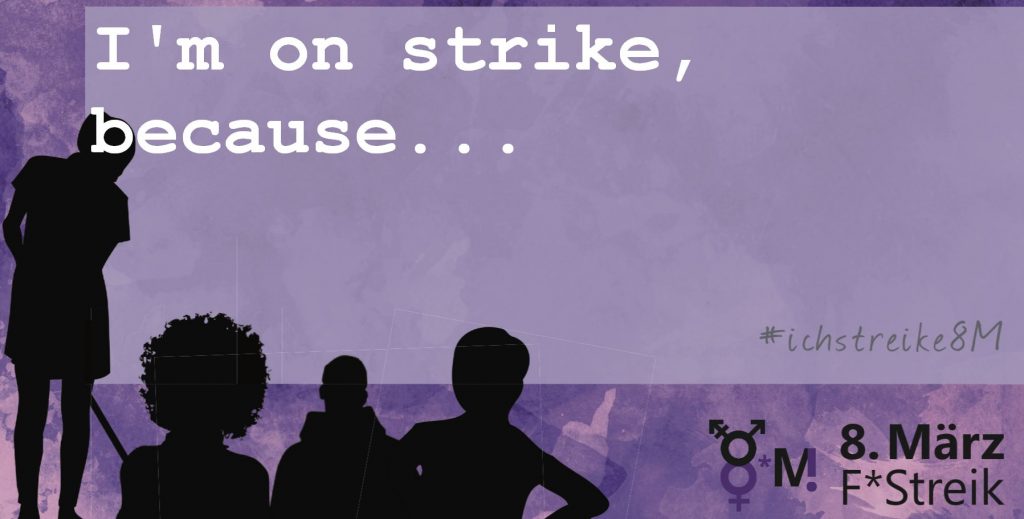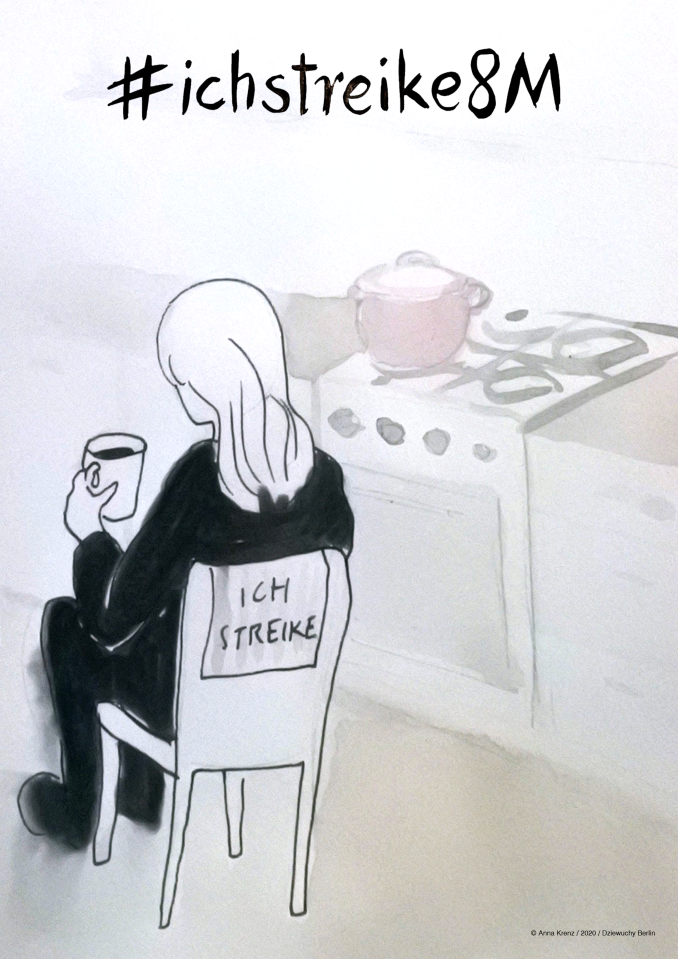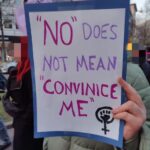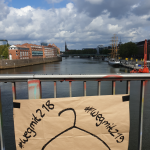 We call for a sit-in strike in your street on 08 March at 12h!
We call for a sit-in strike in your street on 08 March at 12h!
With loudspeakers and leaflets on the chairs we show why we are striking. Just write your demands on there, hang those on the chair, sit in front of your houses and companies! Here is the leaflet to print out.
And play our stream: “100 Gründe am 8. März zu streiken”. @radioangrezi (only German) Together with the women’s council Sêvê we accompany you on the sit-in strike with info about feminicide in Germany and Kurdistan and we take a look at all the different reasons there are for a feminist strike.
The strike lives in the struggles
March 8th is a day of solidarity! We want to connect our global struggles and resistance practices and call out the feminist strike with a collective voice. We want to expose the patriarchal, racist, capitalist and colonial organization of our societies and fight together against oppression and invisibility!
We are not the first – looking back
An incomplete selection of historical women* strikes
1600
According to the “Global Nonviolent Action Database”, the strike of the Haudenosaunee women* is considered the first feminist rebellion in the history of the USA: They wanted to fight for a veto right in decisions about wars and therefore first refused sex and pregnancies, later they withheld clothing and food from men* – with success.
1844
The “Weavers’ Revolt” in Silesia was largely carried by women*, according to historian Gisela Notz. Industrialization had led to great impoverishment, and the women* workers demanded fair wages and dignified treatment by the factory owners. The uprising was bloodily put down.
1893
In Vienna, when Amalie Seidel, a 17-year-old garment worker, wanted to stand up for better working conditions, she was fired. The other female workers* demanded Amalie’s WIeder employment and stopped working in return – other women* and girls* from other factories joined in. After 3 weeks, the “Strike of 700” achieved: a minimum wage, the reinstatement of arrested women and the 10-hour day.
1908
At the beginning of the 20th century, there was great unrest and critical debate among working women*. In 1908, 15,000 women* marched through New York City demanding shorter hours, better pay and the right to vote.
1910
At the International Conference of Working Women* in Copenhagen, Clara Zetkin introduced the idea of an International Women*’s Day – a day to press their demands and call for an end to discrimination.
1911
The 1st International Women*s Day took place on March 19, 1911 – in view of the tense situation only in Denmark, Germany, Austria, Switzerland and the USA. The focus was on the request for political emancipation and for peace.
1917
During the war, Russian women* demanded “bread and peace” – four days after the women* strike, the Tsar was forced to abdicate and women* were granted the right to vote. The date the Women* Strike began, according to the Julian calendar in use in Russia at the time, was Sunday, February 23.In the Gregorian calendar, that equates to March 8.
Since then, March 8 is the date of the Women* Strike, making feminist fights visible all over the world!
Sit-in strike
 There are many reasons for FLINTA*s to strike: Inspiration here.
There are many reasons for FLINTA*s to strike: Inspiration here.
Why strike?
Strike makes visible who and under which conditions normally does the work in our society – and how specific burdens of FLINTA* look like. In capitalism, strike is a form of protest that hurts economically and has consequences quickly felt by all. A strike interrupts usual processes, brings automatisms to a standstill and in the best case nothing works anymore – thus we become uncomfortable!
*FLINTA = Women, Lesbians, Intersexual Persons, Non-Binary Persons, Trans Persons, A-Gender Persons

































































































